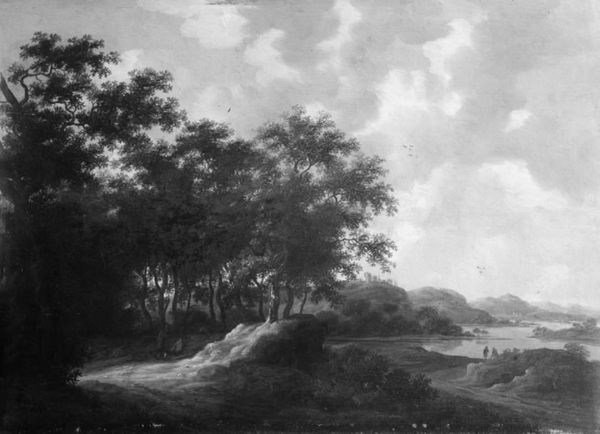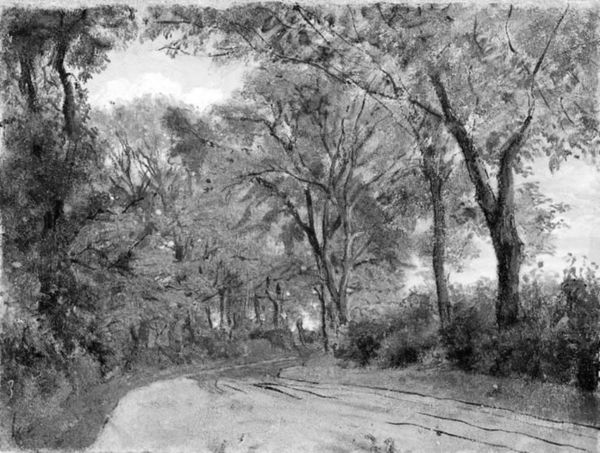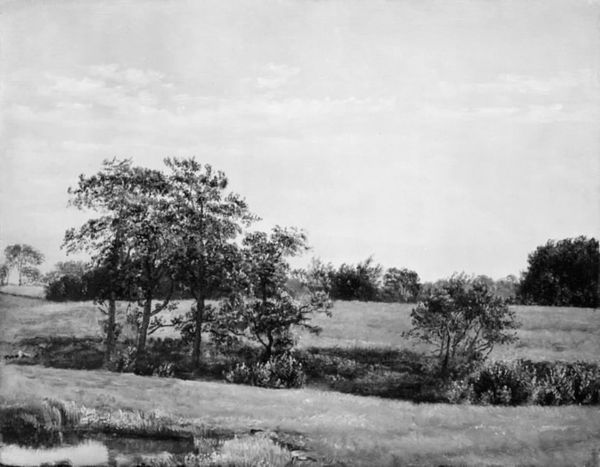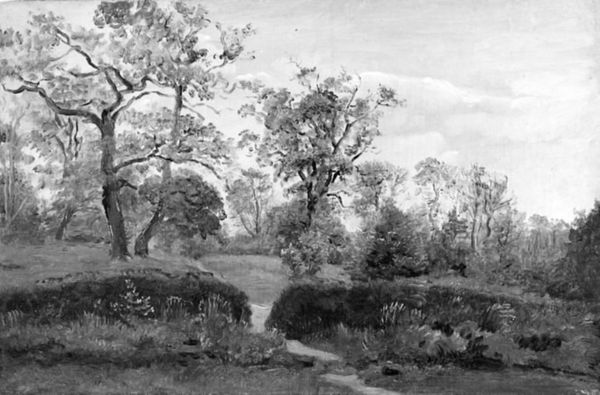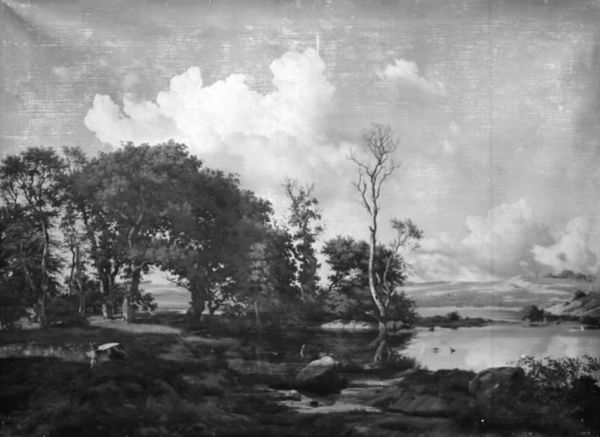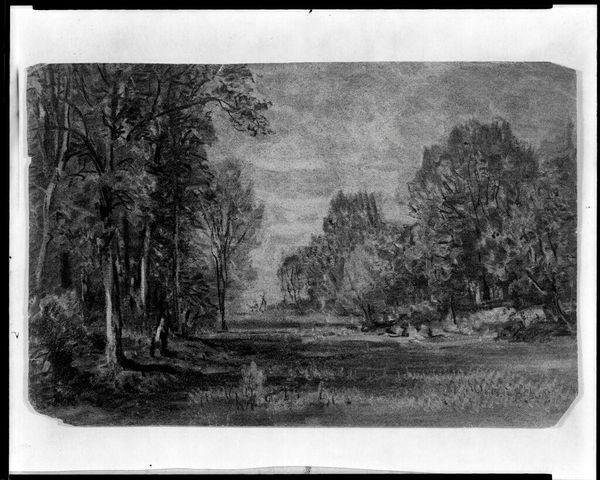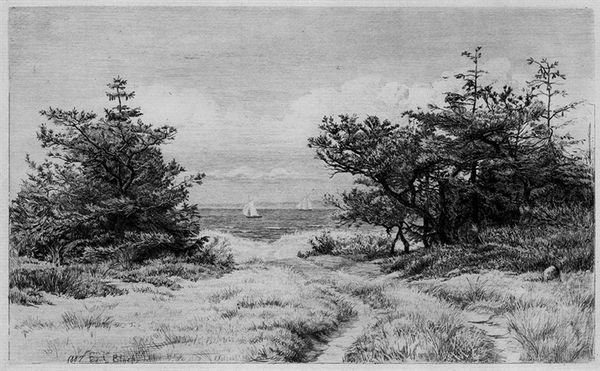
painting, plein-air
#
painting
#
plein-air
#
landscape
#
romanticism
#
black and white
#
monochrome
#
realism
#
monochrome
Dimensions: 59 cm (height) x 75.5 cm (width) (Netto)
Curator: Julius Hellesen painted "A Landscape near Ordrup, Zealand" in 1841. It exemplifies plein-air painting in Denmark at the time. Editor: It’s austere, almost somber, despite the idyllic scene. The limited tonal range creates a rather still atmosphere. Curator: Its monochrome palette aligns it with Romanticism's tendency to idealize through emotionalized and aestheticized depictions of nature. The absence of vibrant color focuses our attention on the formal qualities—composition, light, and shadow. Editor: Yes, the stark contrast of light and shadow lends a powerful symbolism to the forest. Trees often stand for growth, interconnectedness, a bridge between the earthly and the divine... but here, devoid of color, they project an echo of these archetypes, drained and mute. Curator: Interesting observation, that silence. We need to consider that artists of Hellesen’s era engaged actively with discourses about national identity. We might look at this not as an objective landscape study, but a construction intended to evoke specific feelings. This work prompts a consideration of the power structures inherent in Romantic visions of nationhood, even within the ostensibly neutral realm of landscape painting. Editor: I would agree—the artist guides us through the starkly rendered pathway, a symbolic journey—not merely into the forest, but a meditation on cultural heritage itself, rendered in solemn tones. The subtle suggestion of deer, those often romanticized creatures, they contribute to the tapestry, reminding us perhaps of humanity’s own, lost, connection to nature's silent narrative. Curator: The limited palette pushes viewers toward a stark binary between progress and tradition, city and countryside, known and unknown. It emphasizes the visual representation of specific social constructions. Editor: Looking back, the symbols invite such varied readings, reminding us how art transforms meaning across generations. Curator: Exactly! Appreciating art is a dialogue across centuries—in understanding and contesting prevailing meanings. Editor: An evocative, and enduring silence.
Comments
No comments
Be the first to comment and join the conversation on the ultimate creative platform.


